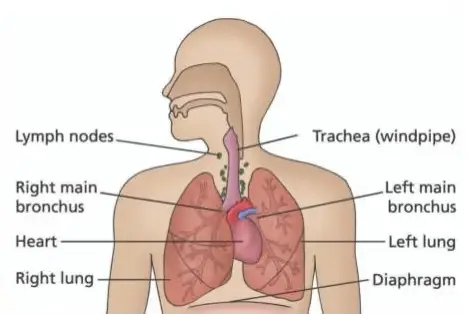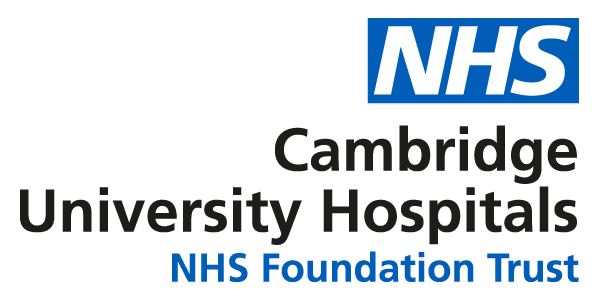Lung cancer is a cancer that starts in the lung tissue, the windpipe (trachea) or the main airway (bronchus). A cancer that starts in the lung is called primary lung cancer. A cancer that spreads to lungs from somewhere else in the body is called secondary lung cancer.
The lungs are the organs of the respiratory system we use to breathe. The two lungs are situated near the backbone on either side of the heart.

Often there are no signs or symptoms in the early stages of lung cancer, however many people with lung cancer will eventually develop symptoms.
Symptoms of lung cancer can include:
- persistent cough
- coughing up blood
- persistent breathlessness
- unexplained tiredness and weight loss
- a pain when breathing or coughing
There are two main types of primary lung cancer, which are classified by the type of cells in which the cancer starts growing. These are:
- non-small cell lung cancer (NSCLC); the most common form of lung cancer that is further divided into three subtypes: adenocarcinoma, squamous cell carcinoma, and large cell carcinoma
- small cell lung cancer (SCLC); less common form that usually spreads faster than NSCLC
Treatment for lung cancer at CUH
The treatment you have depends on several factors, which include:
- the type and size of the cancer
- where the cancer is located in the lung
- how advanced the cancer is
- your general health
A team of specialists at CUH will meet to discuss your condition and to make a recommendation about the best possible treatment for you.
You, along with your clinician, will then discuss your treatment recommendations at the clinic appointment and decide on the right treatment plan for you. Your clinician will explain different treatment options and possible side effects.
The treatment for lung cancer can include:
- surgery
- radiotherapy
- chemotherapy
- targeted therapy
- immunotherapy
You may be able to have surgery to remove cancerous cells, if you have non-small cell lung cancer and you’re in good general health. You may also have other treatments, such as chemotherapy or immunotherapy, before or after surgery.
Surgery is not usually used to treat small-cell lung cancer. SCLC is usually treated with chemotherapy, either on its own or in combination with other treatments, such as radiotherapy or immunotherapy.
Having more than one treatment or a combination of different treatments is to give you the best chance of long-term cure. For some patients, treatment may be given with the aim of curing the cancer. For others, to help control the cancer, prolong life and improve symptoms. Your clinical team will discuss with you what to expect.
Read more about the different types of treatment on our website.

